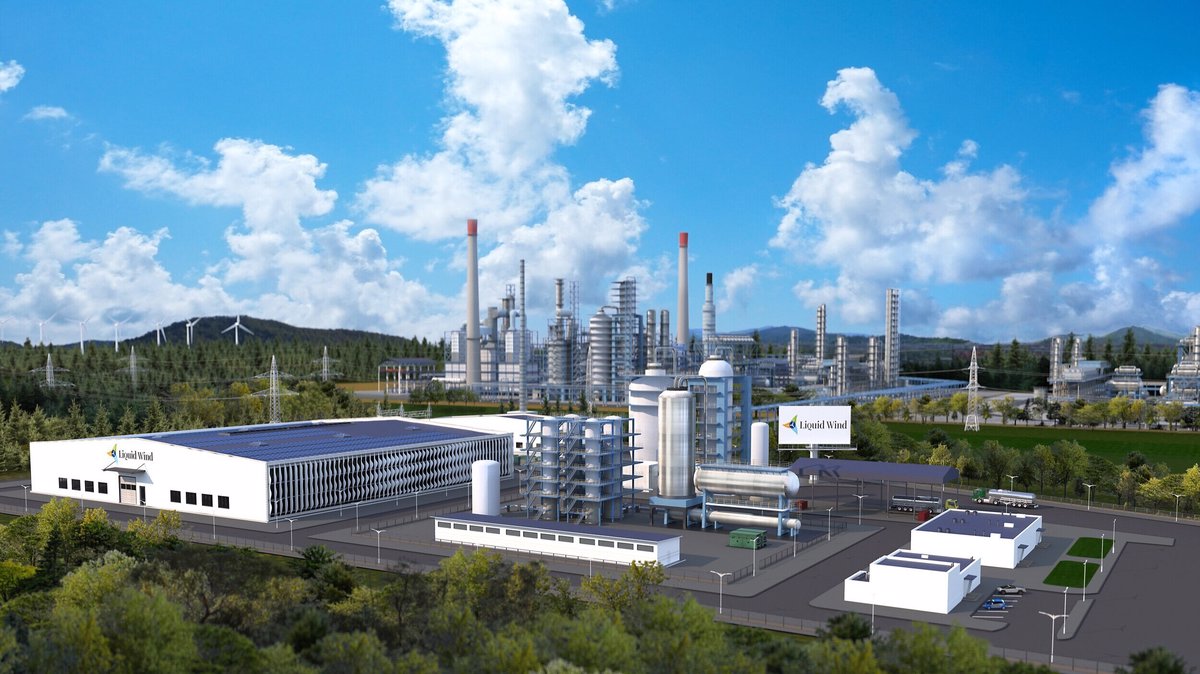E-methanol most promising among alternative fuels - German study
E-methanol has the greatest potential to decarbonise the shipping sector, even more than bio-methanol, ammonia and hydrogen, according to a study commissioned by German non-profit NABU.

PHOTO: Model of Ørsted's commercial-scale green methanol production plant FlagshipONE in Örnsköldsvik, Sweden. Liquid Wind
“In order to be climate-neutral, e-methanol must be produced on the basis of regenerative energy and with a sustainable CO2 source. Bio-methanol or e-methanol with carbon from biomass (BECCU), on the other hand, are not solutions that can be applied on a larger scale,” said the findings of the study commissioned by German environmental organisation Nature and Biodiversity Conservation Union (NABU).
The study was conducted by German environmental research institute Öko-Institut on behalf of NABU.
The study argues that methanol could be one of the most critical "building blocks" in the maritime industry's green transition. It supports e-methanol as a superior alternative to other cleaner marine fuels such as bio-methanol and e-ammonia.
E-methanol, or synthetic methanol, is produced from 100% biogenic carbon dioxide (CO2) that is typically captured through either bioenergy with carbon capture and storage (BECCS) or through direct air capture (DAC). This CO2 is then reacted with green hydrogen using a catalyst. E-methanol can help reduce a vessel's CO2 emissions by up to 95% compared to conventional marine fuels on a well-to-wake basis.
Bio-methanol is produced with sustainable biomass as a feedstock to generate syngas. This process requires little to no fossil fuel, reducing its overall carbon footprint. However, it emits CO2 and carbon monoxide, which are naturally present in the waste streams.
In addition to already existing safety guidelines, e-methanol has a "significantly lower" impact on marine ecosystems than ammonia does in comparison to conventional fuels, the report said.
On the supplier side, Danish wind energy giant Ørsted is developing the FlagshipONE project, which will produce 50,000 mt/year of e-methanol as a marine fuel by 2025. Ørsted’s former partner, Liquid Wind, is also building two additional e-methanol plants to meet growing methanol bunkering demand.
Liquid Wind's FlagshipTWO will produce 100,000 mt/year of green e-methanol by 2025. The third plant’s production capacity has not been specified, but e-methanol production is expected to begin in 2026.
NABU’s shipping expert Sönke Diesener argues that climate impact standards for shipping must be revised immediately to speed up e-fuel adoption. He suggests that consumers should be compensated for "price differences when compared with fossil fuels, such as through a CO2 price."
“The International Maritime Organization (IMO) must not miss the opportunity this year to achieve climate neutrality by 2050 and to launch effective pricing of greenhouse gas emissions,” Diesener concluded.
By Konica Bhatt
Please get in touch with comments or additional info to news@engine.online





